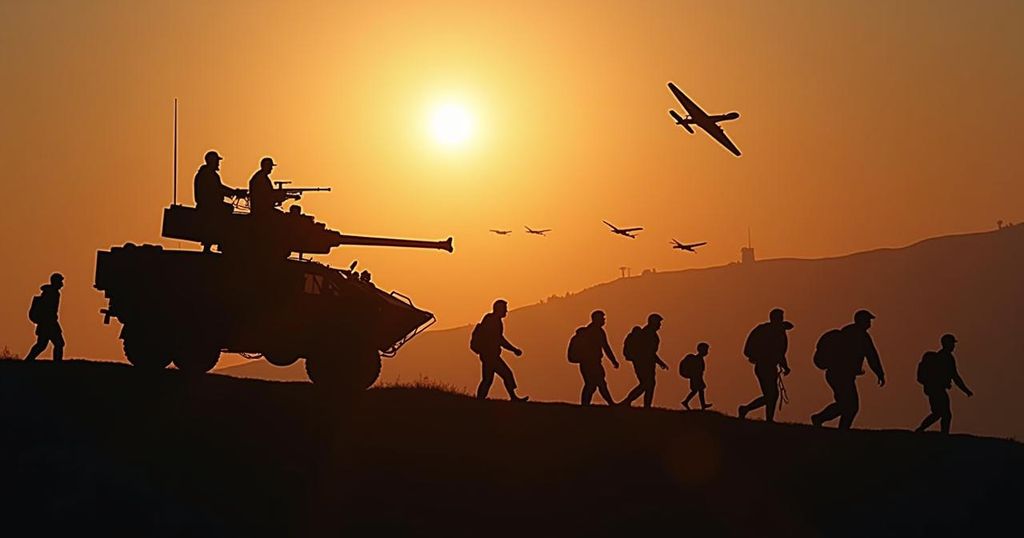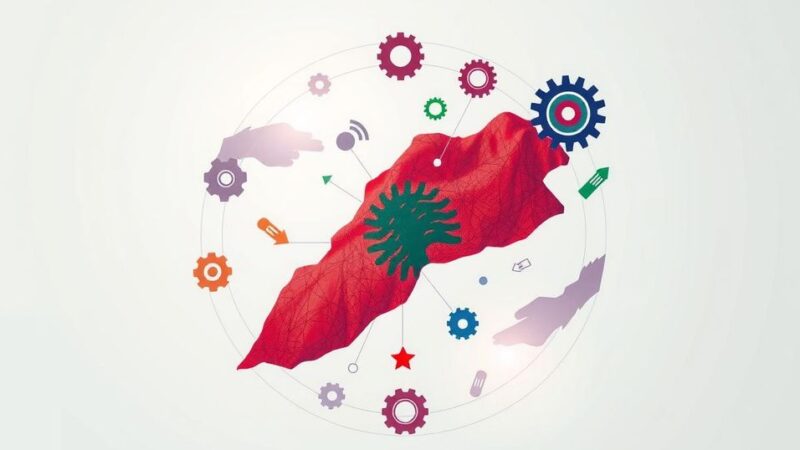Israel has intensified its bombardment in Lebanon amid rising violence in Gaza as the one-year mark of conflict approaches. Thousands have protested globally against the violence, urging an immediate cessation to hostilities. Israeli forces are targeting Hamas and Hezbollah, leading to significant casualties, while Iran’s possible involvement adds complexity to the situation. As many flee the conflict zones and ceasefire calls grow, the humanitarian crisis deepens, highlighting the dire need for international intervention and resolution.
As the conflict in the Middle East escalates, Israel has intensified its bombardment in Lebanon, with significant explosions reported in the southern suburbs of Beirut and attacks on Palestinian refugee camps in the north. This military action coincides with mass demonstrations around the world calling for an end to the ongoing violence in Gaza as the anniversary of the war approaches. Pro-Palestinian rallies have drawn thousands of participants in cities including London, Paris, and New York, highlighting global opposition to U.S. support for Israel and its military efforts. Amidst the turmoil, over 40,000 people are estimated to have lost their lives due to the war, according to officials in Hamas-controlled Gaza. Israeli military operations have focused on key targets, including alleged Hamas fighters and infrastructure, as civilians continue to flee the escalating violence. The Israeli military has targeted specific areas, prompting evacuations and raising fears of further conflict expansion involving neighboring countries such as Iran. Iran’s Oil Minister arrived at a significant oil terminal amid concerns of potential Israeli strikes, indicating the multilayered complexity of tensions in the region. Amid this backdrop, Iran’s links to Hezbollah and Hamas underline the conflict’s regional implications, as calls for ceasefire are made by Lebanese leadership in response to the escalating violence. Additionally, reports state that contact has been lost with a prominent Hezbollah figure following intense Israeli strikes, adding to the rising stakes of the military engagement. The humanitarian situation remains dire, particularly in Gaza, where reports have emerged of high civilian casualties in recent strikes, including incidents involving health care facilities. The global community appears increasingly divided, with some leaders advocating support for Israel while others call for restraint and humanitarian focus.
The backdrop to the current conflict includes a prolonged history of violence between Israel and Palestinian militant groups, particularly Hamas, alongside tensions with Hezbollah in Lebanon. In recent months, military actions have escalated dramatically, characterized by airstrikes and ground operations. The situation is further complicated by international involvement and the dynamics of regional politics, particularly Iran’s support for militant groups. As the conflict receives global attention, protests have surfaced worldwide, emphasizing the humanitarian crisis and the need for a sustainable resolution to the violence. The approaching anniversary of the ongoing conflict is serving as a catalyst for renewed protests and discussions regarding the international response to the situation.
In summary, the recent escalation of hostilities between Israel and militant groups in Lebanon and Gaza has led to significant military actions and widespread protests worldwide. As casualties rise and the humanitarian situation deteriorates, regional and international responses continue to evolve. The need for diplomatic engagement and a ceasefire is increasingly urgent, as the cycle of violence threatens to engulf more areas and further complicate an already volatile situation.
Original Source: www.thehindu.com






